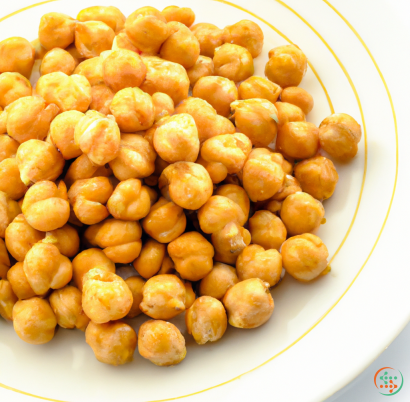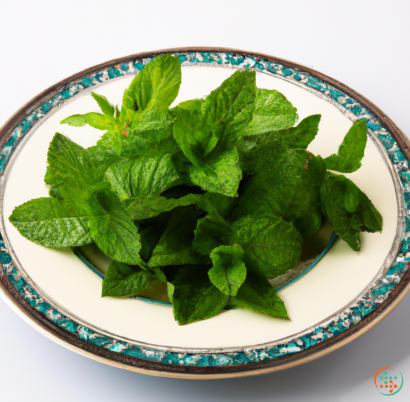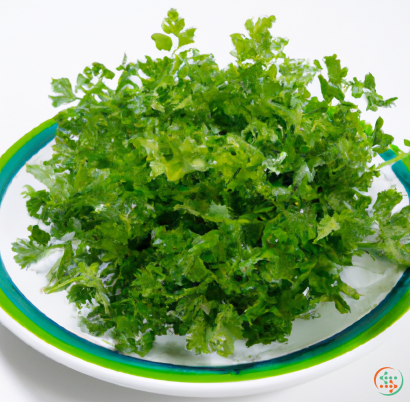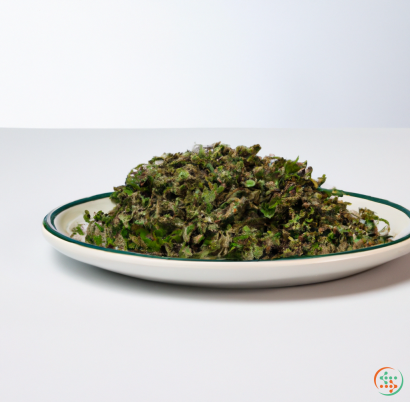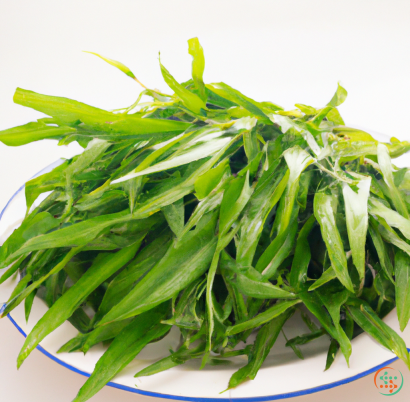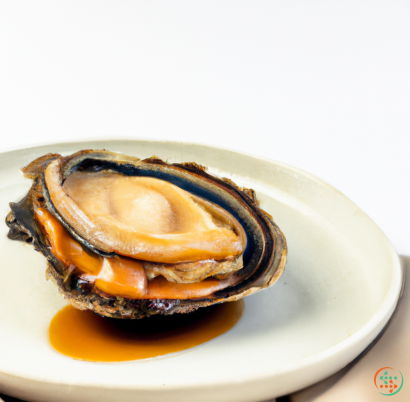Abalone
Abalone, one of the most prized delicacies in the world, has been a delicacy in many cultures throughout human history. Derived from a family of marine molluscs, Abalone is found in shallow oceans from Mexico's Baja Peninsula, all the way to Japan, and even Australia. With its unique texture and flavour, Abalone appeals to all kinds of palates, making it a highly sought-after seafood entrée.
The term “abalone” actually refers to a sea snail which can be identified by its shells. There are over 100 species of abalone, but the black abalone and green abalone species are the most popular. Abalone shells range in color from blue-green to brown and they have a range of beautiful mother-of-pearl inner shells. Abalone shells can vary in size from 1.5 to 12 inches in diameter. The shells are typically heavy, thick and strong, making them perfect for crafting jewelry and other items.
Due to its rarity and high-end market, Abalone is one of the most expensive types of seafood. Its unique texture and culinary potential adds to its allure. Abalone flesh is firm, succulent and almost buttery in texture with a delicate to slightly sweet flavor. It has a light, subtle flavor that goes well with many sauces and complex flavors, such as citrus, cream, butter, garlic, and herbs.
Abalone can be cooked in a variety of ways, including steamed, boiled, pan-fried, or grilled. Abalone should be cooked quickly, on high heat, in order to tenderize the flesh and prevent it from becoming tough and chewy. As a delicacy, abalone is often served raw or uncooked, thinly sliced and draped over sushi and sashimi platters.
Harvesting abalone has become increasingly challenging due to the dwindling populations of wild-caught Abalone. For this reason, aquaculture has become the predominant method for producing this sought-after delicacy. Farmed abalone are raised in controlled conditions that help to regulate temperature, light and nutrient levels. The farmed abalone is fed a variety of seaweeds, marine scraps, and commercial feed pellets. Once reach maturity, the abalone are harvested and sold to markets worldwide.
When buying abalone, either from the local markets or online, be sure to look for clean, shell-on and unopened. Quality abalone will retain its natural pearl coloring and should be free of any blemishes or foreign matter. To store abalone, rinse it in cold water, then keep it refrigerated until ready to cook.
Abalone may be seen as a costly delicacy but is still a worthwhile indulgence especially when shared amongst family and friends. Whether dining in a seafood restaurant or trying it at home, abalone’s succulent meat, subtle flavor and velvety texture will make you a fan in a single bite.
Abalone: From the Shores of Creation to the Dinner Plate
Abalone is an edible mollusk, known for its delicate flavor and texture, found around the world in waters off the coasts of Australia, New Zealand, South Africa, Japan, Mexico, and in Northern portions of the United States. These gastropods are gathered, inspected, processed, and packaged before being delivered to restaurants, supermarkets, and eventually our dinner plates. But how did this iconic seafood staple make its way from ocean depths to our dinner tables? Let’s take a closer look at the complex journey of abalone in order to understand the species and how it ends up in our kitchens.
Abstract:
This article details the journey of abalone from ocean to dinner plate. It discusses their creation and journey through the process of gastronomy, from being gathered to being inspected and processed before delivery. The article also provides some of the nutritional value and production of abalone and why it has become a popular seafood staple.
Introduction:
Abalone is a type of mollusk consumed around the world, most notably in cuisines from the Asian countries. It is known for its delicate flavour and texture and is often served both raw and cooked. This article will explore the journey that abalone takes from the time it is created in the ocean, to the time it reaches the dinner table. We will discuss the harvesting and processing of abalone, as well as its nutritional value and production aspects.
A Closer Look at Abalone
Abalone can be found in the cold coastal waters of the North Pacific and the cooler waters of the South Pacific and is predominately harvested off the coasts of Australia and New Zealand. This succulent, flavorful mollusk comes in many sizes, colors, and shapes and can be recognized by their colorful inner shell, coated with deep purple, green, or blue. Abalone are a type of “true” snail, meaning they possess a large, single shell, unlike other mollusks, such as clams and mussels who possess two shells.
Nutritional Value:
Abalone is considered a very nutritious food, providing proteins, fibers, calcium, omega-3 fatty acids, and vitamin B12 that are vital for our body as well as controlling cholesterol and promoting cardiovascular health. Abalone is also popular for its high levels of iron, zinc, and selenium. Selenium and zinc are both essential for a healthy immune system, and selenium has been found to have powerful antioxidant effects as well. Also, abalone is low in fat and sodium, making it a great choice for those watching their weight.
Harvesting and Production:
Abalone is harvested around the world, most notably in Australia, New Zealand and California. There, divers collect the gastropods, usually by hand, although automated devices can be employed as well. Once harvested, they are typically inspected and graded before they are sent to processing plants where they are shucked, cleaned, cooked, and portioned into full, half, and pearl sized scales. After this stage they can be either frozen or canned.
Processing:
The process of harvesting abalone starts with finding the right locations. Abalone need certain ocean, coastal and estuary conditions to thrive, and these areas need to be monitored in order to ensure the sustainability of the species. Abalone divers must share the harvesting areas with other activities, and the sites need to be clear from pollutants or pollutants associated with fishing activities.
Once the divers reach the harvesting area, they start to bring up abalone from the ocean floor. Abalone gathered for human consumption must be of the right size, as determined by the regional regulations. Divers check weight and measure the abalone before collecting, so that only those within the appropriate legal size ranges are brought to the surface.
Inspecting and Grading:
Once the abalone has been harvested, the next step is to inspect and grade them according to size, firmness, and appearance. The shell should remain intact, with no malformed growths, holes, or discolorations. Abalones that pass this step are then considered grade-A quality.
Shucking and Packaging:
Once abalone has been inspected, it is ready to be shucked and packed. Shucking is the process of removing the meat from the shell, usually done by hand. Some abalones, such as those harvested in California, are required by law to be de-shelled prior to sale.
The meat is then washed, graded and sorted into full, half and pearl-sized rings. Each package is inspected for quality and then placed into a tray for freezing or canning. Abalone frozen for sale will typically keep for up to one year, while canning methods extend their shelf life up to three years.
Delivery to the Dinner Plate:
Abalones that have made it through the inspection and processing stage are now ready to be shipped to retailers and then eventually to their final destination: our dinner plate. At the restaurant or market, they are cooked and prepared according to the customer’s desired dishes. Abalone can be steamed, grilled, fried or even eaten raw. It also can be used in a variety of dishes such as soup, sashimi, sushi etc. For those who like to cook at home, canned or frozen abalones are also available and can be prepared similarly.
Conclusion:
Abalone is a wildly popular seafood, enjoyed by many cultures around the world. Its distinctive flavor and texture, combined with its abundant nutritional value, makes it a seafood staple. But many do not know the complex journey this mollusk must go through to make it to our dinner plate. From the depths of the ocean, to being inspected and processed, and eventually reaching the restaurant or market, abalone has certainly had a grueling journey. Nonetheless, its trek is a testament not only to its popularity but to its tastefulness.
| Vitamin A | 0.002 mg | |
| Vitamin C | 0.0018 grams | |
| Vitamin B1 | 0.22 mg | |
| Vitamin B2 | 0.13 mg | |
| Vitamin B3 | 0.0019 grams | |
| Vitamin B5 | 0.00287 grams | |
| Vitamin B6 | 0.15 mg | |
| Vitamin B9 | 0.014 mg | |
| Vitamin B12 | 0.69 ug |
| Calcium | 0.037 grams |
Daily Value 1.3 g
|
| Iron | 0.0038 grams |
Daily Value 0.018 g
|
| Magnesium | 0.056 grams |
Daily Value 0.4 g
|
| Phosphorus | 0.217 grams |
Daily Value 1.25 g
|
| Potassium | 0.284 grams |
Daily Value 4.7 g
|
| Sodium | 0.591 grams |
Daily Value 2.3 g
|
| Zinc | 0.95 mg |
Daily Value 0.011 g
|
| Copper | 0.23 mg |
Daily Value 0.9 mg
|
| Manganese | 0.07 mg |
Daily Value 0.0023 g
|
| Selenium | 0.0518 mg |
Daily Value 0.055 mg
|
| Tryptophan | 0.224 grams | |
| Threonine | 0.838 grams | |
| Isoleucine | 0.854 grams | |
| Leucine | 1.386 grams | |
| Lysine | 1.433 grams | |
| Methionine | 0.441 grams | |
| Cystine | 0.261 grams | |
| Phenylalanine | 0.715 grams | |
| Tyrosine | 0.627 grams | |
| Valine | 0.86 grams | |
| Arginine | 1.411 grams | |
| Histidine | 0.378 grams | |
| Alanine | 1.169 grams | |
| Aspartic Acid | 1.862 grams | |
| Glutamic Acid | 2.819 grams | |
| Glycine | 1.213 grams | |
| Proline | 0.851 grams | |
| Serine | 0.885 grams |
| Total Sugars | 0.131141 grams |
per 100g
|
| Myristic acid (14:0) | 0.05 grams |
|
| Palmitic acid (16:0) | 0.95 grams |
|
| Stearic acid (18:0) | 0.65 grams |
|
| Total Saturated fatty acids: | 1.65 g | |
| Oleic acid (18:1) | 2.72 grams |
|
| Palmitoleic acid (16:1) | 0.02 grams |
|
| Total Monounsaturated fatty acids: | 2.74 g | |
| Omega-3 Timnodonic acid (20:5) | 0.05 grams |
|
| Omega-3 Clupanodonic acid (22:5) | 0.05 grams |
|
| Linolenic acid (18:3) | 0.1 grams |
|
| Linoleic acid (18:2) | 1.47 grams |
|
| Total Polyunsaturated fatty acids: | 1.67 g | |
| Cholesterol | 0.09 grams |
|
| Total Sterols: | 0.09 g | |

